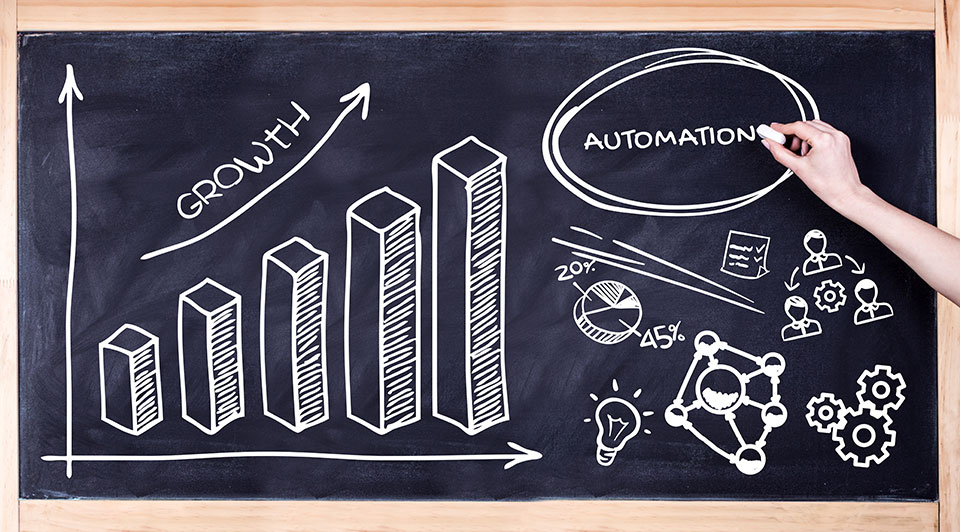Sales Automation: The Puzzle of Reducing Salespersons’ Workload While Maximizing Profits

With the current state of automation technology, it’s no surprise that businesses are seeking methods to automate their sales process. Sales automation is a new buzzword in the world of business. Sales automation aims to improve sales efficiency and effectiveness through technology.
Business organizations that use CRM solutions to automate sales see increased revenues while lowering the time and effort needed to make a transaction.
What is Sales Automation System
A Sales Automation System is a computer software program that automates the creation of leads, making follow-up calls, and tracking deals through AI. It eliminates time-consuming and laborious activities, allowing a sales team to focus on closing deals and maximizing profits.
Sales automation tools allow you to maintain the sales pipeline and quickly train new team members with a repeatable and scalable system. Finally, one can send invoices and payment reminders to clients without having unpleasant conversations.
Sales automation helps manage sales teams, partners, distribution channels, and customers while maintaining existing relationships.
How Does Sales Automation Work
The sales automation process has 7 stages:
- Automated guidance: The sales teams get reminders and notes from the sales automation software. This also keeps the reps on track and helps them not forget important prospects.
- Lead management automation lets the sales manager build a more curated list of leads using rules and filters. Your sales automation software simply segments and scores lead, based on lead characteristics and behavior, including email openings, click-through rates, and social searches.
- Communication automation is critical, with everything from sales emails to automated voicemails, appointment scheduling tools, and personal email sequences.
- Automated data entry: Sales data entry may be extremely laborious and time-consuming. A pre-programmed system automatically fills in sales data such as price, product, and contact information for leads and customers.
- Automated Research: The AI analyzes data to build and update lead profiles, score leads on their likelihood of winning, and marks possible sale opportunities. All the gathered information is stored at a central place for the whole team to access.
- Automated activity logging: Important information needs to be logged in real-time. It helps to know how far one has proceeded with a customer. Automated activity logging auto-fills the important information.
- Automated record creation: A sales automation platform can easily create new records and profiles. As a result, sales people are no longer bogged down with time-consuming responsibilities.
Features of a Sales Automation System
The key to saving time and increasing productivity is to use the correct CRM to handle and activate your sales automation. CRM stands for Customer Relationship Management, a sophisticated system that combines your sales leads’ data and clients’ information in one place.
A CRM sets the groundwork for a successful sales automation strategy. It avails email address, clientele, purchase histories, current sales pipeline stage, and how often someone opens or clicks on an email.
The most important characteristics to look for in sales automation software are :
Automatic and Personalized Communication
The system should assist you in proactively collecting nurture leads to increase your earnings. Auto-responders should also send personalized emails or create a nurture series based on specific activities.
Have an easy-to-use Landing Page Builder
Look for a landing page builder that is simple to use and doesn’t require any coding knowledge. Take advantage of the new Google algorithm to optimize your landing pages for mobile devices. Ensure that the landing pages you’re using are mobile-friendly and load quickly. Look for a landing page builder that gives you access to high-resolution, royalty-free photos as well.
Pipeline Management
Ensure that a sales automation AI Streamlines your sales pipeline with automated follow-up reminders, forecast creation based on prospect needs, tendencies, and other metrics.
Third-Party Integrations
Determine what tools you use to expand your productivity and ensure that the sales automation software interfaces with them. The platform should enable you to automate your sales process by creating, managing, and sharing personalized quotations within your sales automation software.
Economic Advantages of using Sales Automation
Sales automation is a great tool to improve productivity, performance, and accuracy. It improves precision and speeds up the sales process. It also lowers response time, which can boost consumer satisfaction. Pipedrive is currently one example of a sales automation AI in the business market.
Pipedrive is intended to assist you in eliminating human error by automating data input. It also aids in the pre-qualification of prospects by extracting public information. It also automatically notifies you of account updates and eliminates tedious administrative chores.
Automating your marketing operations can help you reach new heights of productivity and efficiency. It may also save you some hours each week. Automating tedious tasks with software frees up your time so you can focus on more important aspects of the job, such as prospecting new customers or finalizing agreements.
Sales automation may also help maximize profits by providing reliable information that lets managers make better decisions about personnel levels and how many leads they need to meet their objectives.
Bring the best of the CEOWORLD magazine's global journalism to audiences in the United States and around the world. - Add CEOWORLD magazine to your Google News feed.
Follow CEOWORLD magazine headlines on: Google News, LinkedIn, Twitter, and Facebook.
Copyright 2025 The CEOWORLD magazine. All rights reserved. This material (and any extract from it) must not be copied, redistributed or placed on any website, without CEOWORLD magazine' prior written consent. For media queries, please contact: info@ceoworld.biz








